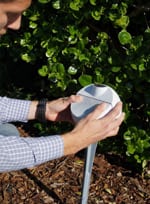
Let’s face it – back in 2000, you probably didn’t own the LG Internet Digital DIOS internet refrigerator. Not because of the $20,000 price tag, but because, well, who in their right minds needed a $20,000 refrigerator that was internet-enabled?
That was then, this is now. The “Internet of Things” is making devices like internet refrigerators more mainstream today because consumers are hyper-adopting new technology and marketers are engaging in digital disruption.
And what marketers will be able to do with data gleaned from machine to machine chatter will bring us to unprecedented personalization than ever before, said Forrester Research Vice President and Research Analyst James McQuivey, Ph.D. during his featured address June 4 at IRCE 2015.
Looking back at 2000, marketers can see marketing devices like internet refrigerators wasn’t the way to go. But marketing the experiences that go along with devices helps drive sales of said devices.
“Do you want an Internet enabled fridge? No,” McQuivey said. “Do you want something that is going to puts a smile on your face? Yes. But you DO need devices, connections and sensors to create that experience.”
And don’t forget about microphones, which McQuivey said is the “Trojan Horse” of the Internet of Things.
Also, with the cost of technology having dropped significantly since the Internet refrigerator was born in 2000, you’ll see more experiential devices created – and funded by everyday people via sites like Kickstarter.
For example, who would want an internet-driven weather monitor for their home, when one could just go to weather.com and find out if it’s going to rain.
But an Internet-enabled device like the BloomSky Weather Station (which is available for pre-order), which you can put in your garden, updates pictures of the sky every five minutes, and allows you to share hyperlocal weather reports with your friends in real-time conditions, creates a community among users who are sharing the same experience.
When devices such as refrigerators, household appliances, wearable technology and other experiential devices connect to the Internet, marketers will be able to learn more about consumer habits and trends than ever before.
And marketers will want to get their hands on that data.
McQuivey used Maytag as a hypothetical example. It could add certain sensors and Internet technology that would detect how the owner uses a washing machine and dryer. And, hypothetically, a laundry detergent like Tide could want to buy that data to help the user choose the right fabric softner, or an appliance seller such as Home Depot could use that information to help the user choose its next washer and dryer.
McQuivey’s prediction: By 2020, the amount of data your customers will give off from their homes, devices, bodies, and cars every single day will be 100 times the cumulative data you have in your data warehouses today.
So how do you, the marketer, prepare for the new connected consumer?
First, McQuivey said, start preparing a single view of your customer, and then prepare an analytics plan that will help you better understand your customer.
Then you need to figure out the relationship between data you collect and the services you will offer. And while you need to dare to dream (you need to brainstorm ideas with your team instead of keeping what may not seem like a great idea to yourself), you also need to consider that you can’t do it on your own. Which partners will help you collect and analyze this new data, and which ones will be able to help you offer these customers new services?
Do you still think the Internet of Things is far-off thinking? Then look down at your Apple Watch, and tell me what time it is… and your heart rate, how much you just paid for that cup of coffee with your Apple Wallet.
“You need to get through the craziness of ‘I won’t need a drone,’ because you won’t need to own one, you’ll be able to borrow one, or ask one to deliver you things,” McQuivey said. “Very rapidly, you will be as comfortable with new technology as you are with your smartphone, or the smartwatch you will get next year.”

